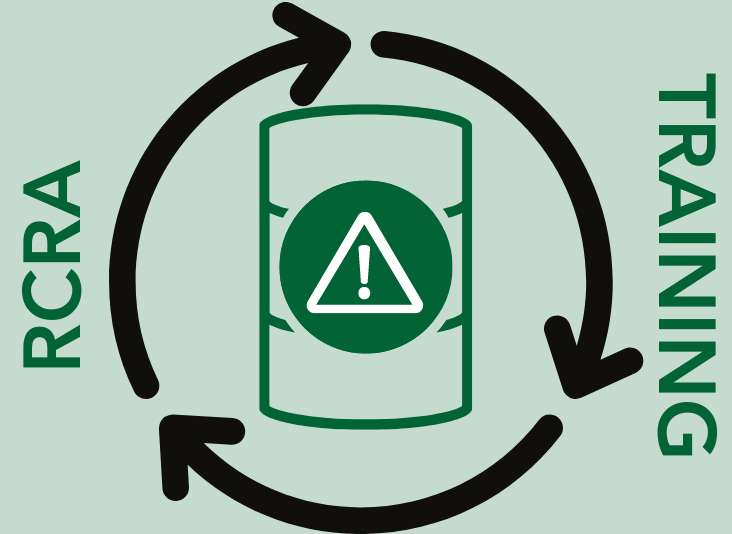Bloodborne Pathogens Training Keeps Your People Safe
In this second blog of our EHS and compliance training deep-dive series, we discuss the aspects of bloodborne pathogens training.
Human blood poses unique and serious risks to workers across industries due to the potential presence of bloodborne pathogens (BBP). As such, it is the only health-related workplace training the Occupational Safety and Health Administration (OSHA) requires.
In fact, it is one of the few health-related trainings specifically developed for the life science industry. This underscores the importance of BBP precautions to biotech organizations—precautions that include proper training programs that will protect your employees and keep you in safety compliance.
Human Blood Is a Gateway to Disease
Human blood poses an enormous potential risk to those that interact with it because of the possibility of the blood being contaminated with BBPs. And what exactly are these dangerous microbes? According to OSHA, BBPs are “infectious microorganisms in human blood that can cause disease in humans.” Some examples of BBPs are:
- Hepatitis B (HBV) and hepatitis C (HBC)
- Human immunodeficiency virus (HIV)
- Ebola
- Malaria
- Zika
There are many vectors for BBP exposure. These pathogens, viruses, parasites, and bacteria can cause disease in humans when infected blood enters the body through broken skin or via direct contact with mucous membranes. Once inside the human host, these diseases can result in a number of near-term negative health effects—including fever, swelling, nausea, headache, and worse. In the long term, BBPs can lead to terrible consequences: paralysis, blindness, deafness, permanent debilitation, and sometimes even premature death.
Don't Take Chances: BBP Training Is a Must
Even in the tiniest amounts, human blood and blood-containing material pose vast risks to all workers who interact with them. All employees with even only a minute chance of exposure to blood in any form must undergo mandatory special training in BBP safety precautions.
Besides researchers, technicians, and medical staff, this could also include workers who could be exposed to blood from other sources. It could include jobs where there is a risk of injury from machines or tools with sharp or pointed edges. This includes those working in:
- Building or grounds maintenance, such as carpenters, groundskeepers, and machinists
- Janitorial roles
- Food preparation services or similar jobs
- Materials management
Put simply, BBP training is a must in every scenario where, as part of normal operations, an employee could be exposed to blood or blood-containing products. Many managers don’t realize just how many of their team members this requirement applies to, nor do they factor in the on-site support teams or temporary workers—which, of course, complicates training program design even more.
Note that these guidelines do not include animal blood—just human. It also only applies to people involved in first aid or injury response as part of a Hazardous Waste Operations and Emergency Response (HAZWOPER) program—not if they are simply the emergency response coordinator.
BBP Training: Federal Demands
The risks BBPs impose are many and serious, and apply to a gamut of workplace roles. So, it’s no wonder that the federal government tasks OSHA with regulating training so stringently and with severe penalties.
OSHA’s training regulations focus on:
- Promoting and maintaining public health
- The prevention of disease outbreak
These are crucial goals—those who don’t comply with the guidelines can’t expect leniency if they are caught. OSHA can impose a baseline fine of $16,131 per violation for noncompliance.
BBP Training: Local Requirements
Training enforcement doesn’t stop with OSHA. Smaller, local sources can also set mandatory rules and regulations, including:
- State governments or agencies
- Municipal or town departments, like boards of health
- Departments of public health (DPHs)
OSHA’s training guidelines inform all other state and local rules, however. The organization provides a universal, proven, and streamlined platform from which local BBP training programs take root. A board of health inspector, for instance, when citing a violation, will enforce OSHA’s rules. As such, it is truly in a manager’s best interest to prioritize OSHA-aligned BBP training—as human and financial health rely on full compliance.
Key BBP Training Elements
OSHA recognizes the vital nature of BBP training and very specifically dictates the requirements to ensure thorough trainings and safe workplaces. Mandated topics include:
- Why the training is offered
- How training prevents the spread of bloodborne disease
- The specific types of illnesses that can be transmitted
- How each illness can be contracted
- The risk of workplace contraction
- Health risks of disease contraction
- Universal precautions needed to prevent the spread of BBP diseases, including:
- Using proper personal protective equipment (PPE) when handling or potentially handling human materials
- Always considering human material as infectious
- Utilizing best practices to properly handle human material, including how to avoid direct contact
- Proper response in the event of a BBP exposure, including:
- The immediate reaction and response protocols, which involve designating partner hospitals where exposed persons should be taken for post-exposure treatment
- Employee rights for privacy under the Health Insurance Portability and Accountability Act (HIPAA)
- Preparation of post-exposure and treatment documentation (this requires a separate professional to handle, but training emphasizes that creating this record is crucial)
- How to create and maintain an exposure control plan (ECP) that covers all precautionary and emergency response steps
As a side note, OSHA requires worksites with a BBP ECP in place to offer HBV vaccines to their employees. There is no obligation for the worker to accept the vaccination, but it must be offered. Training must inform employees of their organization’s obligations in regard to this.
BBP Training Cadence
BBP training is very specifically required at the point of hire as well as annually. Theoretically, a site plan will change yearly as organizations are required to research new techniques to prevent BBP exposure, such as how to prevent accidental skin pricks. As such, this yearly training provides an opportunity to review key and/or updated BBP aspects. Even if there is no new information, trainings must still be held annually to maintain compliance.
Success Demands Custom BBP Training
Every organization handling human blood will vary slightly depending on the industry, size, and key processes for R&D and production. This, combined with the facts that many workers require this training at a regular cadence and that training materials are liable to change, creates the need for flexible training programs that adapt and grow with the organization or facility to support its evolving needs.
On the back end, personalized training regimens, even potentially at the employee level, can allow for a deeper understanding of workplace practices. This empowers them to make smarter, healthier, and safer decisions—before an exposure ever even has the chance to occur. Any format managers select must be capable of being edited or customized, as needed; the more personalized and site-specific, the more impact a training program will have.
Regardless of the format, the importance of BBP training cannot be overstated—it is essential to healthy and safe operations, as well as compliance. Kickstart your BBP training journey or elevate your current training programs with EHSLearn™, Triumvirate Environmental’s premier training offering. Contact us today to learn more.







